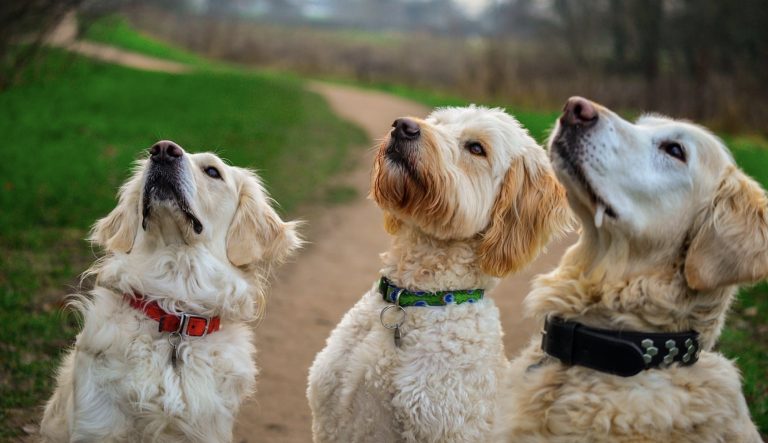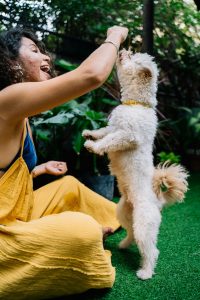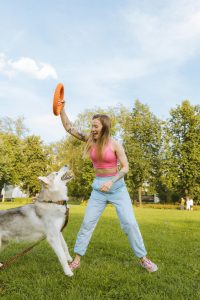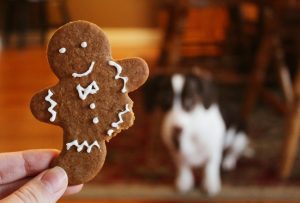Today, I want to talk about a unique training technique. It is a method that I heard during one of my dog training lessons. Dr. Ian Dunbar, a veterinarian and supporter of humane dog training came up with this method.
If you understand the method, you can use it as a tool and resource to modify different behaviors.
Great for Adult Dogs
The technique is great for adult dog training. Why? Because it is simple, easy, and extremely effective. If you have a rescue dog, the technique is amazing in trying to establish first contact, bond with your future pet, and build a relationship without absolutely no command.
Shaping is unnecessary with all or none reward training. Your adult dog, rescue dog, or young puppy will quickly learn to pay attention, stop touching forbidden food, sit stay, or walk calmly.
The best thing about this technique is that it gives you your dog’s attention. From there, you can move to a different type of training, the lure reward training technique.
How does it work?
Basically, there is no instruction and no command with all or none reward training. The difference here is your dog gets many rewards. You just have to be PATIENT. It is the most important part. PATIENCE. Sometimes, you might need to wait a bit more to get the attention you need. Other times, your dog will quickly get to the desired behavior.
So, you sit or stand patiently, without moving, no speaking, and just standing there like a mummy. Wait for the predictable behavior (in some cases sit, or stop barking), and then reward your dog with lots of treats and praise.
For this technique, because your reward lots of treats, it is best that you use a portion of your dog’s daily allowance of food. Have your dog on his lead or off lead, and wait for your puppy to do something you like. Give him a piece of kibble every time he does it.
In the beginning, it is best that you try the technique at home or in an open field where there are no distractions.
Set the bar low in the beginning. This allows your dog to succeed over and over again. Rewarding the behavior will reinforce it and make your dog want to do it. For example, your dog looks at you and not at another dog in the park, give him kibble.
As your dog gets better at any behavior, reinforce better behavior. Set the bar higher and higher as your dog progress in training.
For example, let’s say you want your dog to look at you. The initial response you want to achieve is your dog looks at you for a split second. Reward him with kibble. When he gets better, wait for your dog to look at you for three seconds. Then reward him kibble. And as your dog progresses, walk a bit and turn your back to your dog. You will see your puppy coming in front of you and sitting down.
This is when you give your puppy mega praise and reward.
Another example is walking on a lead. As your dog walks calmly by your side, reward. Continue rewarding, and you will see your dog is less likely to go away from you.
When Can you use it?
We touched on a couple of examples where you can use all or none reward training. Basically, you can use it for any problematic behavior. Remove rewards for behaviors you do not like and sit patiently until your dog changes his behavior.
A great example is whining. This training is probably the best to stop whining. Important Notice: you cannot punish whining, it will continue.
What you can do is wait for your dog to stop it. Once he stops whining, reward him. The next time he whines, repeat the process. After a while, increase the bar. Wait for your dog to stop whining, count to three, then to five, then to 10, and give mega rewards. See the trick?
The same technique can also be used for barking.







